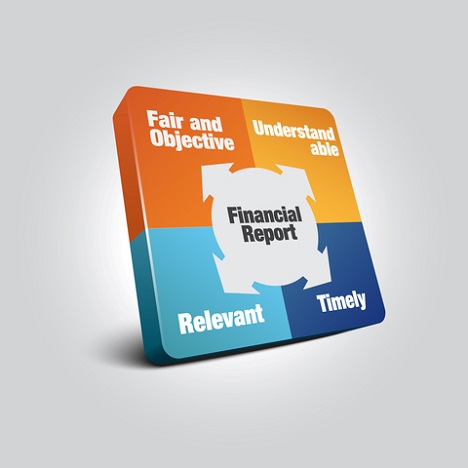In June 2013, the American Institute of CPAs (AICPA) introduced a new accounting option for preparing streamlined, relevant financial statements for private companies, ‘’Financial Reporting Framework for Small- and Medium-Sized Entities” (FRF for SMEs).
Although this reporting framework did not get much traction in the initial release, more and more small- and medium-sized entities, financial statement preparers and financial statement users, especially banks and creditors, are realizing the benefits to using this framework.
Advantages of FRF for Small Business Financial Reporting
FRF for SMEs is a non-GAAP basis of accounting that falls under the special purpose frameworks (SPFs). Both SPFs and GAAP provide credible financial reporting. The advantage to small businesses using FRF for SMEs is they can present the same accrual-based financial statements, including informative note disclosures, without unnecessary complexity and extraneous narrative and details. Therefore, banks, bonding companies and other external stakeholders will still receive the financial statements they are used to, just without some complexities that GAAP requires, which in many cases add little value.
FRF for SMEs consists of simplified principals. It focuses on the most useful information related to your business by:
- Blending traditional accounting principles with some accrual income tax methods.
- Presenting a cost-beneficial solution for those that need external financial statements.
- Providing comprehensive and relevant information.
FRF for SMEs is not for every company though, and each company will need to evaluate which financial statement presentation will be most beneficial. Companies that are best suited for this new framework include:
- Entities that are not required to report under GAAP
- Companies that have no intention of going public
- Businesses that are not engaged in overly complicated transactions
- Entities that do not engage in foreign operations
I believe this new accounting framework is going to provide both the business owner and the external stakeholders with more informative financial information to help everyone make better financial decisions. For example, GAAP financial statements require subsidiary and affiliate financial information be consolidated with the parent company if certain criteria are met. Preparation of financial statements under the new accounting framework will allow parent-only financial statements to be prepared with subsidiary and affiliate information only being required in disclosures. In addition, this framework will reduce the amount of differences between an entity’s financial statements and its tax return.
Differences Between GAAP and FRF for SMEs
Below are some of the major differences from GAAP when applying FRF for SMEs:
- Use of the term “market value” versus “fair value”
- Policy choice to account for income taxes using either the taxes payable method or the deferred income taxes method
- No evaluation or accrual of uncertain tax positions
- No concept of comprehensive income
- Policy choice to either consolidate subsidiaries or account for subsidiaries using the equity method
- No concept of variable interest entities
- Amortization of goodwill over the same period as that used for federal income tax purposes, or 15 years; no impairment testing
- Stock-based compensation is a disclosure only
And, although tax and cash basis of accounting are used in the marketplace, we believe this new framework is a better alternative to these. The FRF for SMEs framework was developed by experts from the CPA profession and has undergone public exposure and professional scrutiny. It contains explicit and comprehensive accounting principles and, therefore, results in a reliable and consistently applied financial framework.
If you believe your business can benefit from this new reporting framework, we would like to assist you in making your decision, including discussions with your external stakeholders. Please feel free to give me a call at 816-525-9699.


